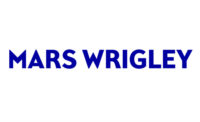Candy Plays Catch-Up
In Self-Checkout Aisles
By Mary Ellen Kuhn
This rapidly growing retailing paradigm requires
effective front-end merchandising to avoid big losses in confectionery
sales.
Queued up in a bank
teller’s line to get some cash lately? Had a gas station attendant
pump your gasoline? Probably not. These days most of us handle such tasks
by ourselves, and feel quite comfortable doing so.
The process of checking out groceries in the
supermarket appears to be headed down the same path — squarely in the
direction of do-it-yourself. Most shoppers — 90 percent, according to
a study by Franklin, Tenn.-based IHL Consulting — have tried
self-checkout.
Not surprisingly, when a shopper is busy scanning
their own groceries, the result tends to be fewer impulse purchases at the
front-end of the store. According to the Front-End Focus Study conducted in
2003, only 12 percent of self-scan shoppers select items for purchase at
the checkout vs. 20 percent who make a purchase at cashier-staffed lanes.
Candy/gum/mints account for 32 percent of total
front-end sales and nearly 34 percent of front-end profits in the
supermarket, according to the Front-End Focus Study, so it’s not hard
to see that the impact of self-scanning on the candy category is
potentially dramatic.
Ray Jones, managing director of Northbrook, Ill.-based
Dechert-Hampe & Co., the consulting company that conducted the
industry-supported study, has done some of the math.
The numbers
Installing a pod of self-checkout lanes usually
requires eliminating three or four traditional checkout lanes. For each
lane that is taken out, potentially $8,000 in annual confectionery sales is
lost, says Jones. Thus, a store that eliminates four lanes stands to lose
up to $32,000 in annual confectionery revenues if the aisle is
un-merchandised.
Retail consultant Cameron Cloeter puts the current
negative impact of self-checkout at about 10 percent of total front-end
supermarket sales, which are estimated at $6 billion by grocery industry
sources.
It doesn’t have to be that way, claims Cloeter,
president of Impulse Marketing Co., Long Valley, N.J., a company he created
to provide vendors and retailers with a resource for increasing
productivity at the checkout. Cloeter has a unique perspective on front-end
merchandising thanks to a career track that includes experience with
several of the key front-end players — confections (Masterfoods),
magazines (Time-Warner) and fixture supplier/magazine distributor (Source
Interlink).
The most obvious problem is the fact that most
self-checkout locations simply don’t have effective merchandising
solutions for candy and gum. Because the decision to install self-checkout
lanes in a supermarket is frequently made by the operations department,
merchandising this section of the store often comes as an afterthought.
Cloeter says he’s seen many cases in which
traditional checkout racks were removed without the knowledge of the
retailer’s merchandising team. When it comes to merchandising
self-scanning checkouts, “we’re playing catch-up,” he
adds.
“My opinion is that items that should be heavily
merchandised are gum, candy, snacks and beverages — and not general
merchandise and only the top-selling weekly magazines,” says Cloeter.
“Customers are working when using self-checkout
and simply do not have the disposable time when compared to a traditional
checkout lane to make a complex purchase decision,” he continues.
“As such, criteria for self-checkout items should be that the item is
frequently purchased by a broad range of customers, meets an immediate need
(hunger, thirst, oral refreshment), is instantly consumable, the decision
to purchase is short, and, of course, meets the retailer’s profit
requirements.”
Candy, gum and mints — as well as snacks and
beverages — satisfy those requirements. Most general merchandise
items, however, do not, a fact documented in the Front-End Focus research.
Browsing time required
In the case of magazines, shoppers usually don’t
make a purchase decision until they’ve scanned the issue a bit,
Cloeter observes. However, he does make an exception for the top-selling
weekly magazines like People and US Weekly, which he says should be included in an ideal self-checkout
fixture layout along with candy, snacks and soft drinks. Despite the
current challenges with self-scan set-ups, the consultant believes that
there is reason for optimism. Small-scale trials have demonstrated that
— with optimal merchandising — self-scan checkout sales can be boosted. In fact, according to the Front-End
Focus, the percentage of consumers who make an impulse buy at self-checkout
increases from an average of 12 percent overall to 14 percent when the
aisle is well-merchandised.
Cloeter goes so far as to say that he sees the
potential for self-scan checkout sales to reach parity with sales in
traditional, staffed lanes — provided more research is conducted and
optimal merchandising configurations are established and implemented. As
shoppers become more accustomed to the checkout process, they will return
to purchasing impulse items, if “given the opportunity,” he
reflects. n
Self-Scan's Star Is Rising
Supermarkets are moving full-steam ahead into
self-scan. Fifty percent of grocery retailers surveyed by IHL Consulting
Group, Franklin, Tenn., reported that they plan to install self-checkout
systems by June 2006.
Self-checkout sales will grow by 88 percent to reach
more than $240 billion this year, IHL forecasts.
Creating a Winning Self-Checkout Set-Up
If you are using an endcap at the head of the
self-checkout aisle, it should be no taller than the self-checkout
installation. A fixture that is too high reduces visibility and may lead to
increased shoplifting.
An island display fixture placed between two
checkout lanes should be even with endcaps to best manage customer traffic
flow.
An island display fixture also requires 13 feet of
open space between the fixture and the checkout. That allows room for two
grocery carts — necessary so that a shipper can move a cart past the
first checkout station to the second one if it opens up while the shopper
is waiting in line.
Source: Front-End Focus Study
Why Candy Doesn't Get It's Due IN Front
The front-end/checkout area of the store is valuable
real estate — even more valuable than many retailers realize,
contends Cameron Cloeter, president of Impulse Marketing Co., Long Valley,
N.J.
"It's one of the highest-volume, most profitable
areas of the store — looking at it in terms of sales per square inch
— yet it's the least understood," says Cloeter.
Part of the problem stems from the fact that several
different product categories — candy, gum, snacks and magazines
— are housed on front-end fixtures, and "nobody has their arms
wrapped around the whole thing," says Cloeter.
In a typical checkout fixture, magazines account for
about one-third of sales, but get roughly half of the space allocation,
Cloeter continues.
"The reality is that the magazine people are more
dominant players at checkout than soda or confectionery; they've been at it
longer, and their sales force understands it better," says Cloeter.
"That's why they get the better position — over the belt and at
the front-end facing the checkout."
Rack configurations often are set by a retailer's
non-food category chief, working in tandem with magazine vendors. The candy
buyers tend to be brought into the process too late in the game, when rack
configuration is already set. "At that point, you've already built
your house," says Cloeter. "Once you build the house, you've got
to live with the size of the rooms. You can't put a box of Snickers in a
magazine pocket.”
Nominate the 2006
Retailer of the Year
Looking for an opportunity to give your two cents
worth about something important? This is your opportunity!
Please help us select Confectioner’s 2006 Retailer of the Year by nominating a retailer in any
class of trade who excels in the candy category. To be nominated, a retailer should meet the following criteria:
Effective, creative merchandising in the store
Strong candy sales
Good vendor relationships and ethical business
dealings
Commitment to the category
Encourages and supports new product creativity




